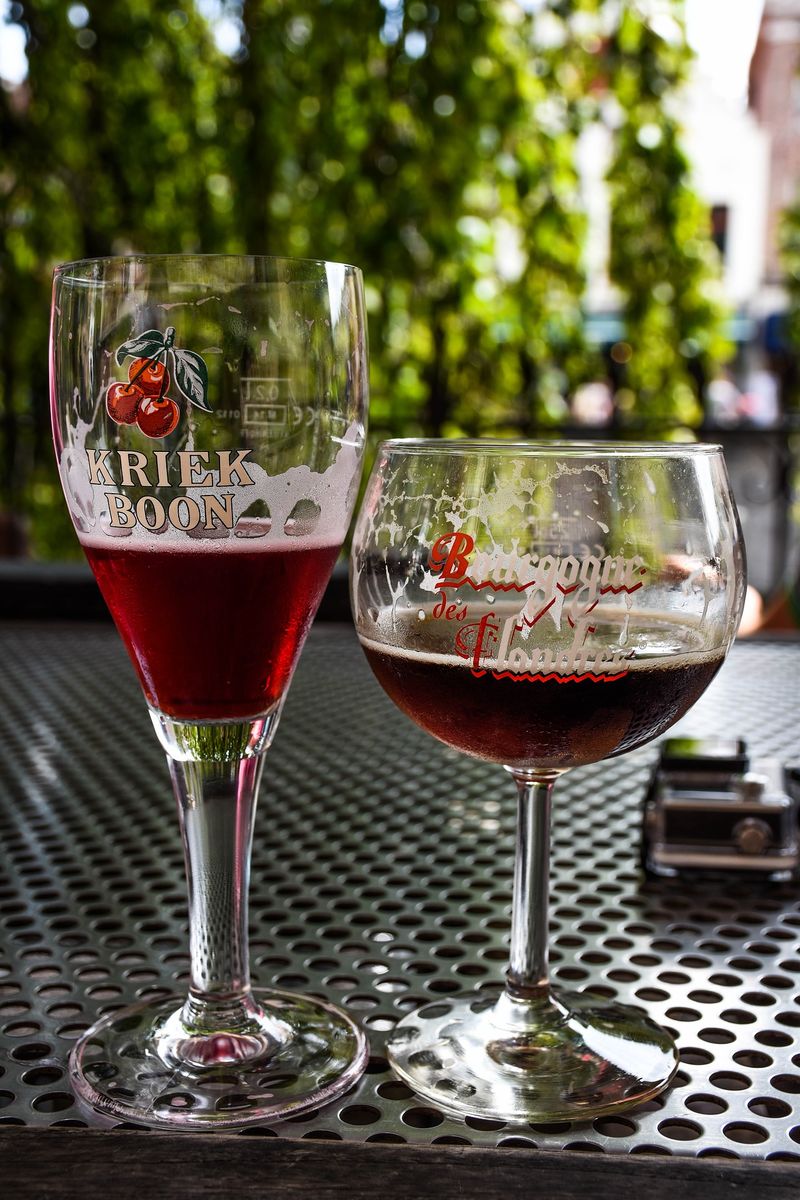Start 14-Day Trial Subscription
*No credit card required

2018 US Import Beer Sales
Whether you're a brewer forecasting what might be viable in the near future, a merchandiser aiming to please the masses, or just want to be the cool person at the company mixer: If you want to know where craft beer is headed, look no further than the imported beer segment.
There are two reasons imports are directly charting the course of craft consumption. First, imported beer sales are largely anchored in traditional lager styles that truly boast tradition and the trappings of authenticity that come with it. The main exception to this rule from a market share segment is Belgian beer, but the idea of tradition and authenticity remains every bit as valid for these legendary brewers. A fledgling craft brand without a seed of authenticity is almost guaranteed to be washed away in today's tide of SKUs.
Second, as oft stated, these overseas and cross-border counterparts in beer production are already doing what American brewers are just now catching on to, namely forsaking the molasses-laden stouts and enamel-stripping hop bombs reminiscent of the American frontier mentality that has defined craft beer for the last decade.
Doing away with these "training wheels" is like going on a date without makeup or playing an electric guitar without reverb; there's nowhere to hide your imperfections. And that's now okay, because America is learning to brew better. The future of American craft is here, and it is already written in the light, refined styles European and Mexican beer brewers have championed for ages. Let's check the numbers.
Within total beer sales for the year of 2018, imported beer is playing an increasingly large and dynamic role. 2017 saw sales increase considerably for the category, and 2018 saw those numbers continue their upward trend. Dollar sales for the calendar year of 2018 rung in at about $7 billion, which was an increase of roughly $488 million compared to 2017 or more than 7 percent.
This puts imported beer at almost exactly 20 percent of the entire beer market share, and second to only Domestic Premium (Budweiser, MillerCoors…) in total sales. While Domestic Premiums still comprise about 36 percent of total market share, sales for that category dropped by over half a billion this past year, which can be interpreted as a one-two punch from Imports and Craft. Imports are a mixed bag of high-margin, lower-volume segments like Belgian beer and higher-volume, lower price-point powerhouses a la Mexican beer, which combine into an alluring set of new experiences for the drinker that still retain an air of comfort and familiarity. They share similarities with both Craft and Domestic categories, but simply by virtue of being from elsewhere they boast a competitive edge – at least in the current state of the market.
While the defined Import category is flourishing, not all its segments are faring equally as well.
Mexican beer sales continue to dominate this category for a number of reasons. Demographically, about 17 percent of the American population are Hispanic or Latino, a number which is projected to nearly double by 2050. However, even non-Hispanic and Latino drinkers love Mexican beer, with 35 percent of non-Hispanic drinkers reporting they drink Mexican beer, according to a 2016 study by Simmons research. Considering the fact that these numbers are nearly equivalent to the 43 percent of non-Hispanic drinkers who drink craft, Mexican beer seems to have a somewhat universal appeal.
In a modern clime of escapism where everyone is seeking to “find their beach” and stay healthy with lighter beer styles that retain an element of style, Mexican beer is likely the first choice.
The Import Category
As for the segments of the Import category, just about every segment that comprises more than one percent of total dollar share is down from last year, save for Mexican beer, which currently comprises around 70 percent of the market. Mexican beer is up more than half a billion dollars from last year for a total of about $5.2 billion. In that respect, we can partially attribute the meteoric growth of Mexican beer to the dips in these segments.
The second largest segment is European imports, around $1.6 billion in dollar sales over the past year, but down about $43 million, or 2.7 percent. We see similar tales of the tape for Holland imports ($815 million in sales, down $15 million or 2 percent) and Belgian imports ($417 million in sales, down $11 million or 2.5 percent), which are the next largest segments.
Canadian imports, which totaled $212 million in sales last year, are down about $16 million, or 7 percent, and German imports, which totaled $92 million in sales are down almost $10 million, or 10 percent.
We finally see an uptick with Australasian imports, which are up one percent to about $76 million, and then see a sharp decline with UK imports, down $11 million, or almost 20 percent, to $46 million in sales over the last year.
Before we go any further, bear in mind that these are large-scale factors that do not represent similar numbers for smaller brands, which must be examined on a case-by-case basis. These numbers focus more on the largest producers and the sway they have over these macroscopic statistics. However, what we can extrapolate is that the producers of Mexican beer, largely Modelo and Corona, must be doing something very right.

Marketing Dictating the Market
In the past we have discussed reasons why Mexican beer boasts an intrinsic advantage over its overseas imported counterparts. Proximity is a key factor. As a neighboring country, ease of import and demographic and cultural ties between the U.S. and Mexico facilitate sales, trade and growth. Factor in the easy-drinking nature of lager-dominant Mexican beer, which marries with the American palate as both a stand-alone beverage and a food pairing, and you’ve got a winning combination. Also, while it may be obvious, costs of transportation are lower for Mexican imports that don’t have to cross an entire ocean to reach the American drinker. However, there’s one more factor that is undoubtedly swaying sales.
Both Modelo and Corona are top ten beer brands across all categories, and Modelo especially has seen a drastic sales increase in the past year – up $278 million dollars, or almost 20 percent to a whopping $1.76 billion. These numbers have Modelo in line with Corona, but actually surpassing it – Corona rings in at $1.74 billion and saw growth of .1 percent this year.
So what was Corona already doing that Modelo wasn’t? Marketing. Both brands are under the Constellation Brands umbrella, which has done a superb job of advertising Modelo and Corona as lifestyle brands. Television especially has rapidly brought Modelo to a much wider audience.
The pockets are deep with these brands, but for any imported brand looking for strong growth, marketing might be the answer. What traits and demographics do your brands identify with? Are they marketable to the masses? If not, it is likely wiser to not overextend, but rather hunker down and focus on a more ground-level approach. It’s hard to imagine esoteric Belgian beer on television, and perhaps it shouldn’t be. It is likely neither feasible or practical. Much of the appeal of traditional brands is their uncompromising “pure” nature. They are meant to be sought out.
Therefore, the question becomes – what means of marketing can bring a brand to a wider audience that remain in line with its core values? Before you answer that question, though, here’s one more to consider: Is growth required now, or is it more important to hold fast and weather the cyclical nature of beer sales trends?
After all, brands rooted in tradition and history automatically boast a differentiating factor simply by having survived. Pursuing growth is a gamble and, in many ways, it is a road which you cannot turn back on once you’ve started, both financially and philosophically.
For the smaller, artisanal producer – look inward before looking outward, just as you’ve done with the creation of your products. Quality over quantity will never fail.
For more on the numbers and their sources, see below:
The data we’ve examined comes from IRI Worldwide, a market research firm that tracks category-wide sales trends of beer sold in numerous retail outlets and then produces a monthly report of its findings. These findings can be used to provide real-time insight into the ever-changing beer marketplace, both Craft and Macro. They can also help industry participants adapt to the marketplace and help you make more informed choices as a consumer. These findings can help you make more informed choices as a consumer and can help commercial brewers adapt to the marketplace. Sometimes, it’s just fun to see what’s hot and what’s not.
Here are a few things to keep in mind – these numbers are on a national scale and may not represent individual brewery or regional sales accurately. The numbers also do not draw a hard line between beer styles within certain categories, which could mask sales trends of smaller brewers. They track sales of packaged beer only and from a few different sources, including convenience stores (think gas stations), a general “food” category (grocery stores, etc.), and a combined multi-outlet and convenience (MULC) store category (a combination of grocery, drug, Wal-Mart/Sam’s Club, dollar stores and military stores, among others). We have focused on the MULC category. While not all-encompassing, it’s a great, well-rounded resource.

Header Photo Courtesy Flickr/Stock Catalog



